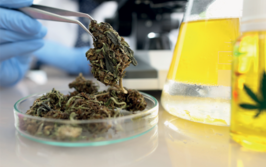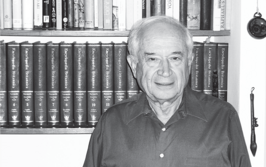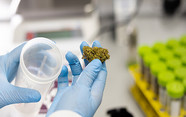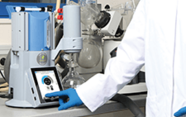Green Genes
Sitting down with… cannabis genetics expert Keith Allen, Director of Bioinformatics at Front Range Biosciences
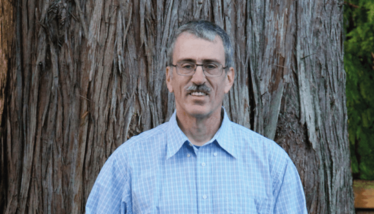
What were you doing before entering the cannabis industry?
I originally trained as a biologist – my undergraduate degree was in biology and for my PhD I studied photosynthesis in plants. During my postdoc in plant developmental genetics, I discovered the then-brand-new field of bioinformatics and was hooked! I moved from academia into biotech, where I worked on gene discovery, first in mice and later in plants. In 2005, I was hired by Syngenta and tasked with building a bioinformatics function for this huge agricultural company – with around 25,000 employees in 70 countries it was a big change from working in startups!
My goal at Syngenta was to find the genes underlying the traits that are most important to modern agriculture, including drought tolerance, nitrogen use efficiency, and overall yield. Eventually, I was promoted to a research fellow, which was a very cool gig. My job was to advise the company on what was coming down the pipe in my area of expertise – to prepare for a coming challenge or capitalize on an emerging niche. The skills I developed during my time in “big ag” have proved invaluable in my work in cannabis.
How did your move into cannabis come about?
Around five years ago there was a drop in commodity prices and the agriculture sector was hit hard. I was made redundant and there weren’t a lot of roles available in traditional agriculture.
I’d been keeping an eye on the emerging cannabis and hemp markets for years, intrigued by the rapidly shifting legal and scientific landscape. I took on some consulting work in the industry and started analyzing published data sets to find interesting new patterns. Often, scientists will generate huge data sets in order to answer a particular question – I looked at the same data but asked different questions. I built a name for myself in the industry and was hired, first by Steep Hill and now Front Range Biosciences.
How does cannabis compare to traditional crops?
Moving into the cannabis industry from big agriculture was both frustrating and exciting. I was used to working in species like tomato, corn, and rice, where we have a huge knowledge base. Whole academic careers have been spent studying tomatoes alone, and the genomes of major crop species are complete and well-annotated. I came into the cannabis field and, frankly, the genome was a mess. We still don't have a full understanding of the genes in the cannabinoid and terpene pathways that lie at the heart of the industry – let alone the rest of the genome.
What does your role at Front Range involve?
An important part of my work is improving our knowledge of cannabis genetics. I published a paper last year on the terpene synthesis gene family (1) and I’m now working on the genes leading up to cannabinoid biosynthesis. What I'm discovering is that every step of the cannabinoid pathway is more complex than we thought at first blush. At the same time, I’m looking at genetic variation across different cannabis cultivars. Together, these two lines of work form the foundation for our eventual goal: creating cultivars with a consistent chemical profile.
There are many cannabis consumers who are only interested in getting the biggest high – that demographic is well served by the current market. But others are looking for something more subtle and specific – the older user who wants to feel stimulated but not stoned or the patient who needs a precise formulation to treat a specific illness. These groups want to go to a dispensary, buy the same strain, and know that they will get the same effects. We want to serve that market.
What are the challenges in producing consistent strains?
As genetics company Phylos has demonstrated (2), there is an awful lot of genetic diversity in cannabis, even in samples being sold under the same strain name. Partly, this is because breeders or dispensaries are free to name a strain whatever they like. But the cannabis genome is also incredibly variable. Plants from the same batch of seeds will be highly heterozygous, despite all being the same cultivar, and the cannabinoid and terpene profiles can be very different. Finally, even if you propagate with cuttings to produce clones, cannabis is variable in how it produces oils. Genetically identical plants grown indoors and outdoors will look very different and have different cannabinoid and terpene profiles. We have to remember that these compounds are produced by the plant in order to communicate with (and react to) its environment; for example, to repel pests. It's a very complicated picture
Where do you see cannabis cultivation heading?
I believe that the future of cannabis, at least for medical use, lies in careful inbreeding to produce largely homozygous strains, supplied with precise growing instructions.
The ultimate goal is to understand enough about the plant to breed all the different varieties that there is a demand for, or could be a demand for in the future. Beyond CBD synthase and THC synthase, there are another 16-plus active synthase genes in this family, which we are working to functionally characterize. Some of them are making unknown cannabinoids and – as any pharmaceutical chemist will tell you – if you know that one member of a molecular family is of medical interest you’re going to want to explore all the related molecules. It will take a while to bottom out but I think it's worthwhile.
With more and more serious genomics people entering the field, I’m hopeful for the future.
The industry is changing fast...
Many cannabis companies now are high-tech operations with excellent scientists doing really interesting work. The more professional it becomes, the more attractive the field is going to be, and with legalization marching onwards there will be fewer and fewer barriers for people wanting to move into this space.
The increasing legitimization of the field is attracting a lot of investment too and many of us in the industry are worried about who will be funding cannabis in the future. Big tobacco and big alcohol are openly “shopping” in this space; big agriculture is keeping a lower profile but there are rumors that companies like Monsanto are looking at buying up germplasm collections.
I like the fact that this industry is mostly made up of small players with a close connection to their suppliers and end-users, and I’d like to see it stay that way.
- KD Allen et al., “Genomic characterization of the complete terpene synthase gene family from Cannabis sativa,” PLoS One,14, e0222363 (2019). DOI: 10.1371/journal.pone.0222363.
- The Phylos Galaxy (2016). Available at: https://bit.ly/2TyywUk
